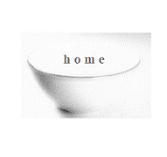"Navigation presumes displacement, separation and loss, departures and farewells. New ports of call, perhaps, but also old ones that are visited less frequently than before. Once you go someplace else, you're not where you were before. If you got lost along the way -- well, then you can't be sure where you are." -- Terrence Harpold [1]
Welcome to the transmediation -- from BASIC to JavaScript in an HTML/CSS environment -- of The Yellow Bowl. Originally containing approximately 800 lexias, The Yellow Bowl was first presented at "Hypertext, Hypermedia: Defining a Fictional Form",[2] a 1992 MLA panel, chaired by Terry Harpold, where I said:
"In my narrabase, The Yellow Bowl, the contrast between the narrator's 'true' memories and the ways she distorts them to shape the story places the reader on the uneasy ground between the narrator and the narrative."
Following the MLA talk, TYB was exhibited at the 1993 Fourth International Symposium on Electronic Art (FISEA) in Minneapolis; read in May 1994 at the San Francisco State University Poetry Center "Writing and Community Series"; hosted by Michael Palmer; [3] and installed at Digital Identities, Sheppard Gallery, University of Nevada in 1995, curated by Joseph DeLappe. But when the WWW became widely available, BASIC-coded works fell by the wayside. And after I was run down in July, 1994, I was not able to finish the version under contract to Eastgate.
The Yellow Bowl consists of intersecting narratives that explore how writers distort life experience into fiction and specifically how Grace, a woman highway engineer -- separated from her husband, an installation artist -- expresses separation in magic realism-infused tales of two young women who, in search of each other, escape from different filter-bubble feudal colonies, in a future world where electronic communication with the wider world is forbidden. The narratives that Grace tells her daughter Marthia are informed not only by her separation from Wesley and her life as a woman researcher, but also by radically changing 1990's computer culture.
Animated text generates the Helen/Clara stories, while simultaneously code generates the aleatoric Grace Files. An associated sound work simulates both the oral telling of the stories and the polyphonic structure of the work. As is my practice, since the 1986 hypertextual telling of Uncle Roger online, I began posting to TYB in the first week of January 2019 and finished the transmediation in early June, 2019. [4]
To navigate The Yellow Bowl, click on the central double-arrow random icon or the arrow icons on either side. -- Judy Malloy
notes
1. Terrence Harpold, "The Contingencies of the Hypertext Link", Writing on the Edge 2:2, Spring 1991, 126-138, 127. There are several answers to the question: Why is Grace, the narrator of TYB, a highway engineer? One is that in one of my information retrieval jobs, I had done some research on paving materials. Highway engineering was, I recollect thinking, the male-dominated world where I wished to situate Grace, the narrator of TYB. Another answer is that about the time I formulated TYB, Harpold's riff on Derrida's theory of the relationship of the history of roads to the history writing was on my mind.
2. "Hypertext, Hypermedia: Defining a Fictional Form"
Modern Languages Association Convention
Special Session #388
Tuesday, December 29, 1992, 12:00 noon-1:15 PM
Terence Harpold, University of Pennsylvania (chair)
Michael Joyce, Jackson Community College; Vassar College
Carolyn Guyer, Boston, MA
Judy Malloy, Leonardo
Stuart Moulthrop, Georgia Institute of Technology
Source: Humanist Discussion Group, Vol. 6, No. 0338. Thursday, 5 Nov 1992.
3.
Reader: Malloy, Judy
Accession Number - 1162
San Francisco State Poetry Center Digital Archive
4. Details about the transmediation of The Yellow Bowl are available in my February, 2018- Writer's Notebook




